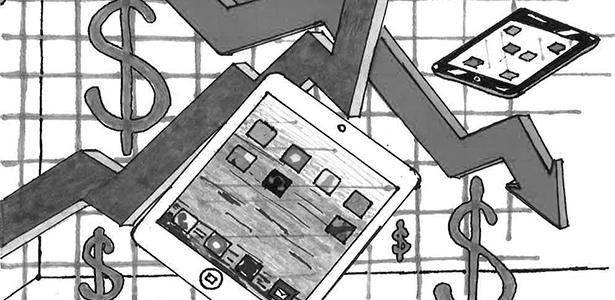Schools are supposed to be places of learning, where students are exposed to new technologies and new ways of thinking. If tablets are provided to students, the benefits to their education would become quickly obvious.
We live in a world where it seems that humanity is making technological leaps and bounds year after year. Devices are getting smaller and smaller, and it wouldn’t be surprising if in 50 years the smartphone would just be an adhesive sticker on your forehead that reads your thoughts.
If we as a society hope to reach this obscure technological milestone and others like it, then it is essential that our nation’s students are properly equipped with the right technology to inspire them to reach for the stars.
Innovation should bring to life the technologies that only currently exist in science fiction. One feasible way to ensure that we eventually develop the jetpacks our parents dreamed of yesterday is to make sure that today’s youth have access to touchscreen tablet devices.
The overall cost of implementation of tablets in the classroom would vary by school and in some cases the initial costs are likely to be more than the costs of traditional textbooks. In the long run when all costs are factored into the equation, there are monetary savings.
According to the Federal Communications Commission’s 2012 report, E-textbooks could save between $250-$1,000 per student per year. Parents and schools could pay significantly less by not having to purchase a physical textbook in the first place.
Like online homework, the schools would just have to purchase software licenses.
Currently, students are required to carry heavy textbooks. This is a common complaint among parents now that their children’s backpacks are loaded with much more and much heavier textbooks. If those paper bricks they are lugging around could be replaced with lightweight tablets, the students would benefit.
The benefits of tablets in schools shouldn’t be confined to just the K-12 education system. A real-world example of tablets being implemented in schools is already happening across town at CSU Fresno.
According to Fresno State’s new president, Joseph Castro, the university plans to provide tablets for 1000 students and 40 instructors in a trial program that Castro hopes will eventually cover the entire campus.
“As you may have noticed, elementary, junior high and high school students throughout the Valley are using iPads and other tablets in their schools,” he said. “We must be prepared to serve these students well when they arrive at Fresno State.” Castro also said the university is working to upgrade its wireless Internet and classroom technology to make the program a success when it’s rolled out this fall.
Schools that have implemented tablets and electronic learning devices have seen overall increases in standardized test scores. In 2012, Apple supplied iPads to a California middle school which resulted in 20 percent higher state math assessment scores among students who used an interactive algebra application versus students who used a traditional textbook.
E-textbooks have come a long way since they were introduced decades ago. They no longer only display simple black-and-white text on a screen, but have become interactive, enhanced and refined to give the user access to extra learning materials in the text-like images, audio and video.
E-textbooks are surpassing what a physical paper book can offer by allowing students to write in the margins, highlight text and access various reference sources like dictionaries and encyclopedias.
Tablets offer the ability to constantly update material in subjects that are still evolving like science or criminal justice, rather than waiting for the next edition of textbooks to be printed years later.
To develop a competitive edge with other nations, our students must have access to up-to-date information. Technology will always make its inevitable march forward, and humanity will always strive to keep up.
Our ability to stay current with our rapidly advancing technology starts with our youth.
If they are not taught about technology early on, it will only harm future generations’ rate of developing new technologies, like jetpacks, that they and us wish to see in the near future.
Click to see the PRO side


